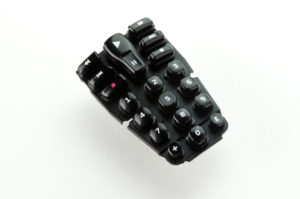
Keypads are synonymous with input peripherals. They are typically used in conjunction with machines, equipment or other electronic devices. Like other input peripherals, they allow you to control the devices with which they are used. How do keypads work exactly?
Overview of Keypads
Keypads are “pads” of individual keys that are used to support input commands. Some of them only contain numbers, whereas other keypads contain numbers, letters and special characters. Regardless, all keypads contain keys. Each key has a letter, number or special character printed onto it. When you press a key, you’ll complete its circuit. The keypad will identify this command while sending the appropriate signal to the device with which the keypad is used.
The Different Types of Keypads
While all keypads consist of a “pad” of individual keys, they are available in several different types. Plastic keypads, for instance, live up to their namesake by featuring a hard plastic construction. They are strong, durable and inexpensive. Plastic keypads also support thin and low-profile designs.
In addition to plastic keypads, there are silicone rubber keypads. Silicone rubber keypads aren’t made of hard plastic. Rather, they are made of an elastic polymer known as silicone rubber. Silicone rubber keypads have webbing around each key. The webbing is designed to separate the bottom of the keys from the top of the conductive contacts. All silicone rubber keypads feature webbing made of silicone rubber. Plastic keypads are made entirely of plastic and don’t have any silicone rubber in their construction.
How Keypads Work
Whether it’s a plastic keypad or a silicone rubber keypad, all keypads work in a similar way. Their respective keys function as switches. If a keypad has 12 keys, it will have 12 switches. Keypads with more keys, conversely, will have more switches.
Keypads are essentially switches. Each key acts as a separate switch. And like with all switches, they consist of circuits that can be opened or closed.
The switches for a keypad’s keys are open by default. In their natural and default state, the keys won’t touch the conductive contacts underneath them. As a result, the switch circuits are open. Pressing a key, though, will close the switch circuit. When you press a key, you’ll complete the circuit by forcing the key’s conductive contact to touch the underlying conductive contact. Releasing your finger from the key, conversely, will break the switch circuit so that goes back to the open position.
